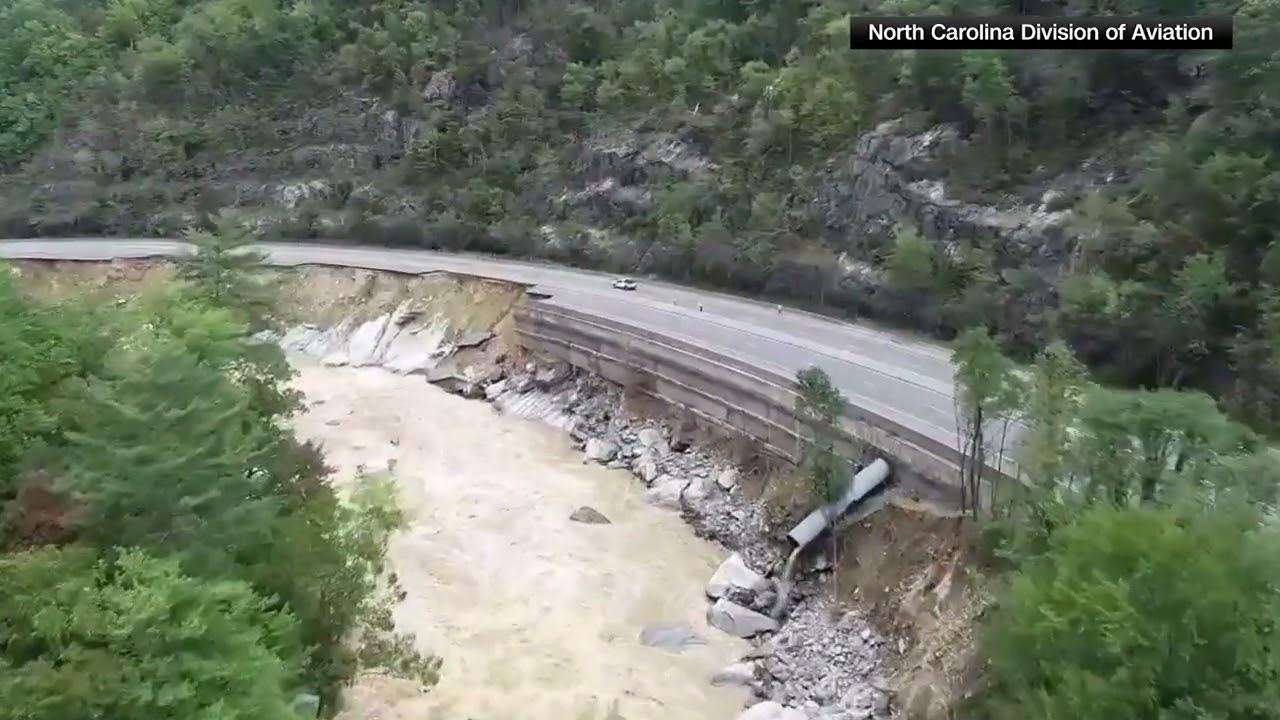As crews worked tirelessly to repair the initial havoc wreaked by Tropical Storm Helene on Interstate 40 in North Carolina, Mother Nature had other plans. Fresh damage has emerged along the vital transportation artery, forcing officials to push back the eagerly anticipated reopening date. The unexpected setback has left thousands of daily commuters and truckers navigating alternative routes, while repair teams face a new round of challenges in their race against time. North Carolina transportation officials face mounting challenges as new damage has further postponed the anticipated reopening of a critical stretch of Interstate 40, which was initially closed due to the impacts of Hurricane Helene. The latest setbacks have emerged during repair operations, complicating an already complex restoration process.
Engineers discovered significant structural concerns beneath the highway’s surface during routine inspections, revealing extensive water damage that had compromised the road’s foundation. The affected section, spanning approximately 12 miles, requires additional reinforcement and complete reconstruction in several areas where subsurface erosion has created dangerous voids.
Local businesses and commuters continue to grapple with the extended closure, forcing thousands to rely on detour routes that add considerable time to their daily travels. The alternative pathways, primarily consisting of state highways and local roads, are experiencing unprecedented traffic volumes, leading to increased congestion and wear on these secondary routes.
The North Carolina Department of Transportation (NCDOT) has mobilized additional crews and resources to address the newly identified problems. Specialized equipment and materials are being brought in from neighboring states to expedite the repair process, though officials remain cautious about providing a definitive timeline for completion.
Weather conditions have complicated matters further, with recent rainfall saturating the soil and causing additional erosion concerns. Engineering teams are implementing innovative drainage solutions and reinforcement techniques to prevent similar issues from arising in the future, incorporating resilient materials and advanced construction methods.
The economic impact continues to ripple through local communities, affecting supply chains and commercial transportation routes. Trucking companies report significant increases in fuel costs and delivery times, while local businesses near the interstate exits report dramatic decreases in customer traffic.
Emergency response teams have adjusted their protocols to maintain efficient service coverage, establishing temporary stations and alternative routes to ensure minimal impact on response times. Local authorities are coordinating with state officials to optimize traffic flow through detour routes and minimize disruption to residential areas experiencing increased traffic.
The closure has prompted discussions about infrastructure resilience and the need for comprehensive updates to the state’s transportation network. Environmental experts are conducting assessments to determine if changes in local drainage patterns contributed to the damage, aiming to prevent similar incidents in future extreme weather events.
State officials are exploring federal emergency funding options to offset the mounting costs of repairs and improvements. The project’s scope has expanded significantly from initial estimates, incorporating not only immediate repairs but also long-term reinforcement measures to protect against future weather-related damage.
